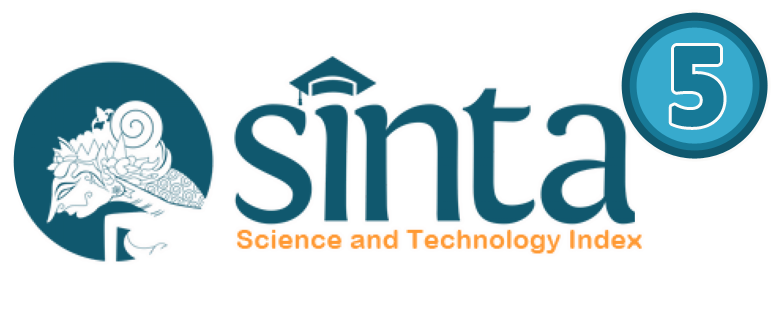THE TRADITIONAL GENDER ROLES STEREOTYPES AS SEEN IN TROLLS (2016) THE DREAMWORKS ANIMATION MOVIE
Abstract
In recent years, literature is not merely about poetry, prose, novel, short story but also the movie. One of the exciting animation movies is Trolls, produced by DreamWorks Animation in 2016. Undoubtedly, movies are not always about entertainment but can persuasively create an ideology in the kids' minds. Gender stereotypes are a negative impact of ideology that exists all over the world. Two research questions are formulated; what are the stereotypes towards women in Trolls movie and what ideology the movie seems to promote. This research aims to reveal the traditional stereotype towards women in Trolls movies and make the audience aware of the ideology of gender stereotypes towards women. This research applies library research with the descriptive qualitative method. Since this research analyzes gender stereotypes towards women in the movie, binary opposition theory can see the movie's structure. The writer concludes that women’s traditional gender roles stereotypes still exist in this movie. The stereotypes over women through Poppy as the character can be seen as irrational, weak, and submissive. The researcher also can find the patriarchal ideology. The movie promotes the gender issue in this film that shows the man is superior to the woman
Keywords
Full Text:
PDFReferences
Abrams, M. (2009). Glossary of Literary Terms. Massachusetts: Wadsworth Publishing Company.
Aprillia, J. (2021, 03 08). Kumparan . Retrieved from Kumparan Woman: https://kumparan.com/kumparanwoman/6-fakta-kekerasan-terhadap-perempuan-dari-catahu-2020-komnas-perempuan-1vJYEi6vyxX/full
Blum, L. (2004). Stereotypes and Stereotyping: A Moral Analysis. Philosophical Papers, 251-289.
Creswell, J. W. (2009). Research Design Qualitative, Quantitative, and Mixed Methods Approaches. California: Sage Publication, Inc.
DreamWorks. (2021, April 25). DreamWorks. Retrieved from DreamWorks: https://www.dreamworks.com/trolls
Frassanito , P., & Pettorini, B. (2008). Pink and Blue: The Color of Gender. Childs Nerv Syst, 881-882.
Hakim, A. M., & Asri, Y. (2019). The Portrait of Women Resistance to Patriarki Culture in Novel Amba Pamuntjak Lasmi. Proceedings of the 1st Progress in Social Science, Humanities and Education Research Symposium (PPSSHERS 2019) (pp. 88-91). Padang: Advances in Social Science, Education and Humanities Research Vol. 464.
Hess, J. (1978, April 17). Film and Ideology. Retrieved from Jump Cut A Review of Contemporary Media: https://www.ejumpcut.org/archive/onlinessays/JC17folder/FilmAndIdeololgy.html
Karmila, I., & Lisdawati, I. (2020). Analysis Turn-Taking Used by Princess Poppy and Branch in the Trolls Movie. Project (Professional Journal of English Education), 420-433.
Kennedy, A. (2014). The Effect of Color on Emotions in Animated Films. Indiana: Purdue University.
Kim, S. J. (2016). "Pink is a Girl's Color": A Case Study of Bilingual Kindergarteners' Discussion About Gender Roles. Routledge Taylor & Francis Group, 1-24.
Komnas Perempuan. (2021). CATAHU 2021: Catatan Tahunan Kekerasan Terhadap Perempuan Tahun 2020. Jakarta: Komnas Perempuan Indonesia.
Lewin, M. (1984). In the shadow of the past: Psychology Portrays the sexes. New York: Columbia University Press.
Mitchell, M. (Director). (2016). Trolls [Motion Picture].
Phillips, W. H. (2009). Film: An Introduction. Boston: Bedford/St. Martin's.
Putra, A. P. (2019). An Analysis of Subtitling Methods in the Movie of Trolls. Jakarta: Fakultas Sastra Universitas Kristen Indonesia.
Tonsing, J. C., & Tonsing, K. N. (2019). Understanding the role of Patriarchal Ideology in Intimate Partner Violence among South Asian Women in Hong Kong. International Social Work Vol. 62, 161-171.
Tyson, L. (2006). Critical Theory Today. London: Routledge.
DOI: https://doi.org/10.36269/sigeh.v2i2.518
Refbacks
- There are currently no refbacks.

This work is licensed under a Creative Commons Attribution-ShareAlike 4.0 International License.
ISSN ONLINE: 2775-8834




1.png)










